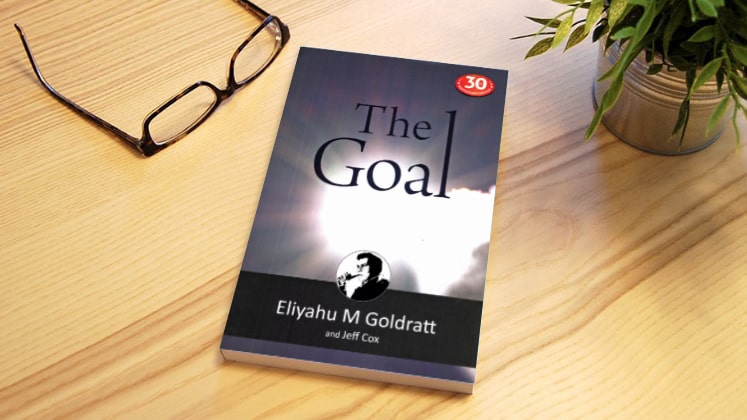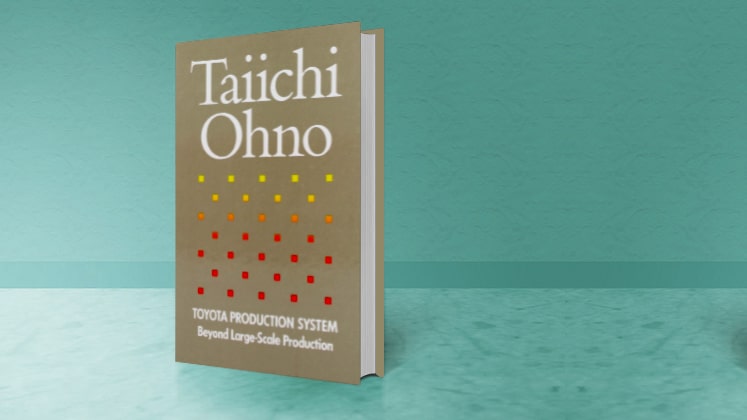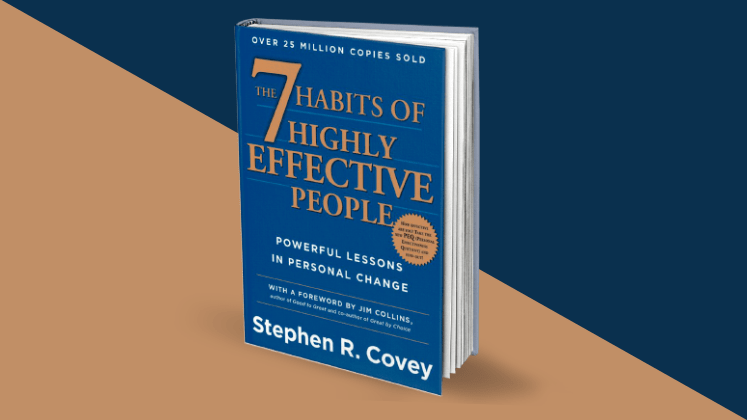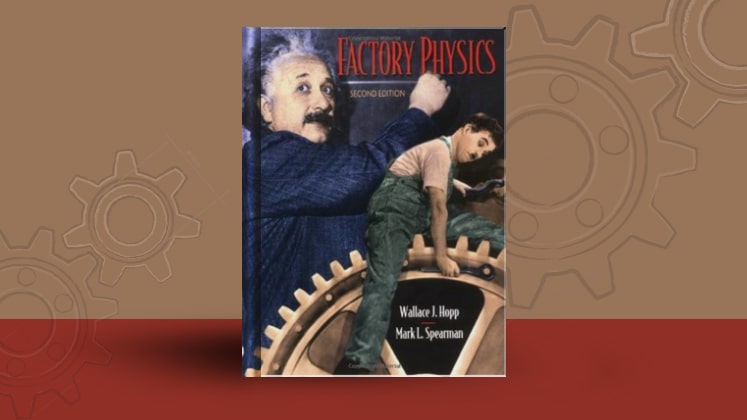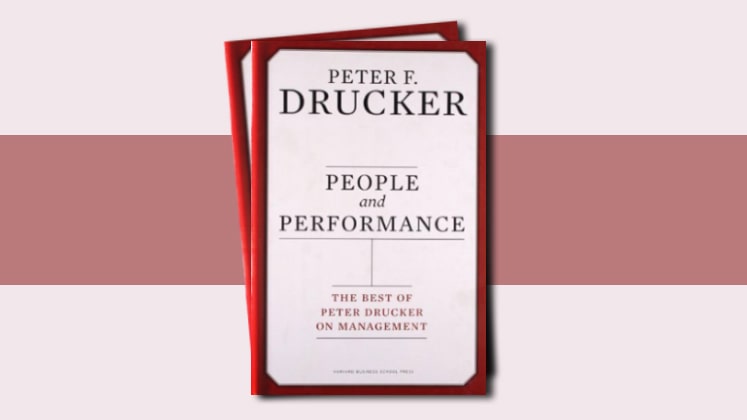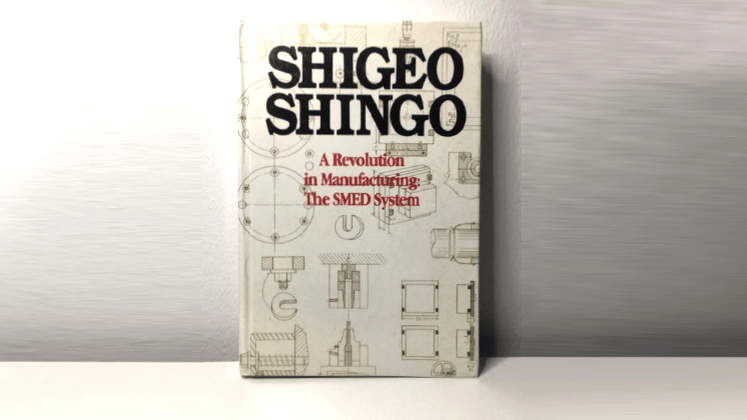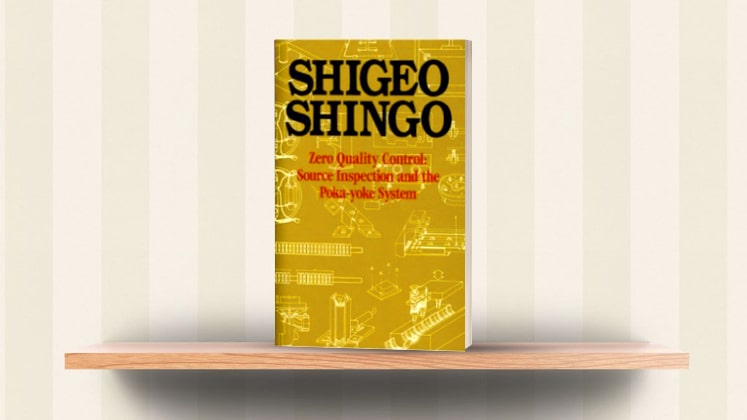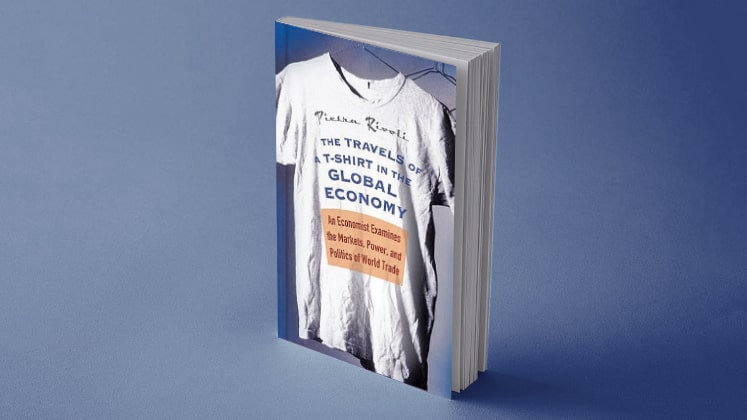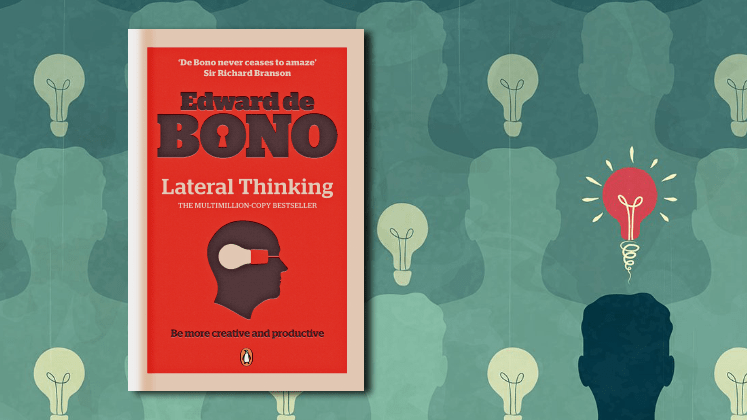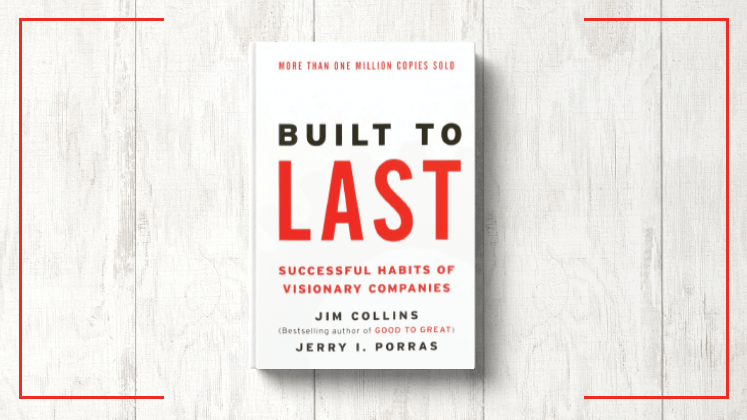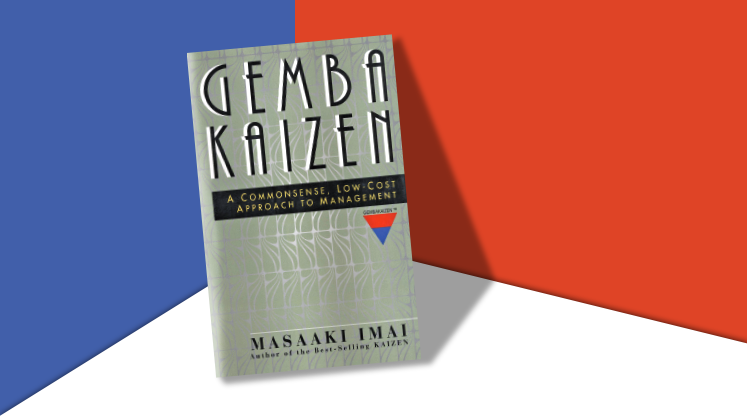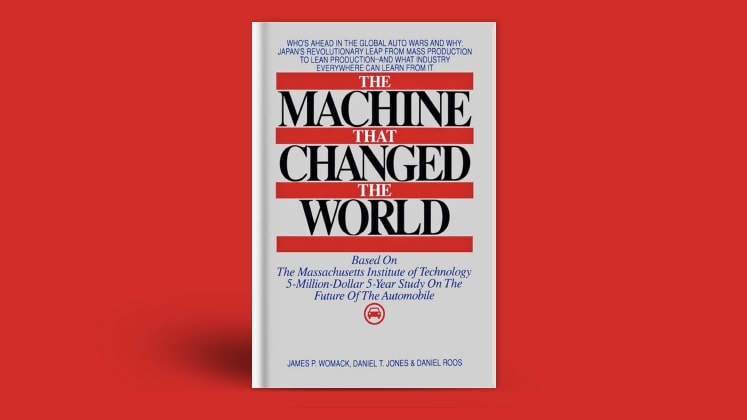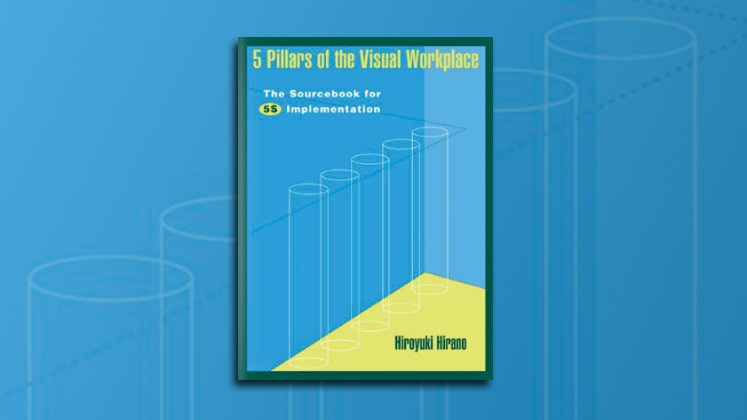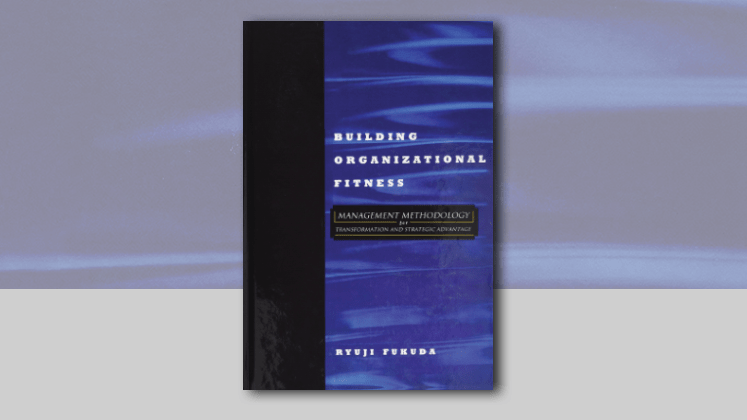The response to our curated list of ‘must-reads’ for apparel manufacturing managers, hand-picked by industry experts to keep you updated – Top 15 technology books to read during COVID-19 – has received termendous response. Armed with the positivity that the industry is keen to upgrade and learn we will soon be out with our second curated list of the next 10 top must read based on books that have received a great recommendation… Keep watching this space for the list.
Deepak Mohindra
Editor in Chief, Apparel Online, StitchWorld and apparelresources.com
The ‘new normal’ born from the COVID-19, while creating challenges, is also an opportune time for the managers and executives of the industry to indulge in learning and relearning. And what better way than reading books that one never gets the time to go through, when engaged in day-to-day work?
The world has changed, but the industry is still as dynamic, if not more. It’s a fact that an apparel factory is a classroom and the managers must stay alert as lessons flow in from all directions – from bottlenecks that need to be resolved, to targets that must be met and everything in between and beyond.
Many times, solutions are difficult to find and directions unclear. It is then that managers need to retreat to a repository of wisdom to take a fresh perspective on shaping businesses. The sources of wisdom are aplenty, so it can be difficult to decide what should be read. Making the task easy, Apparel Resources has curated a list of ‘must-reads’ for apparel manufacturing managers, hand-picked by industry experts to keep you updated.
Enjoy reading!
‘THE GOAL’ By Eliyahu M Goldratt
Recommended by Ram Sareen, Founder and CEO of Tukatech; Devadas PM, GM – Operations Excellence, Madura Clothing; and Dr. Rajesh Bheda, CEO and Director, Rajesh Bheda Consulting
WHY TO READ ‘THE GOAL’?
The Goal talks about ongoing improvements in the light of ‘Theory of Constraints’. Unlike most of the management books which are academic in narration, The Goal takes a storytelling approach to decipher the concepts of operations management through its protagonist Alex Rogo, Plant Manager at UniCo Manufacturing. Alex has only three months to turnaround the plant’s unreliable and unprofitable performance, and avert the plant’s acquisition. The book goes on to point out the role of bottlenecks (constraints) in a manufacturing process, and how identifying them not only makes it possible to reduce their impact, but also yields a useful tool for measuring and controlling the flow of materials.
Excerpts: “Adopting ‘making money’ as the goal of a manufacturing organization looks like a pretty good assumption because there isn’t one item on that list that’s worth a damn if the company isn’t making money.”
‘TOYOTA PRODUCTION SYSTEM’ by Taiichi Ohno
Recommended by Anand Deshpande, Founder, Aadma Consulting, and S Badri Narayana, Director – Operations Excellence, FLAME TAO Knoware
WHY TO READ ‘TOYOTA PRODUCTION SYSTEM
Taiichi Ohno’s text combines his candid insights with a rigorous analysis of Toyota’s attempts at Lean production. In Toyota Production System: Beyond Large Scale Production, Ohno explains how Lean principles can improve any production endeavour. This book helps understand TPS in detail as the concepts are clearly explained. The caution though is that they can be understood only if the reader has hands-on experience on the production floor.
Excerpts: “The slower but consistent tortoise causes less waste and is more desirable than the speedy hare that races ahead and then stops occasionally to doze. The Toyota Production System can be realized only when all the workers become tortoises.” – Taiichi Ohno
‘THE 7 HABITS OF HIGHLY EFFECTIVE PEOPLE’ By Stephen R. Covey
Recommended by Devadas PM, GM – Operations Excellence, Madura Clothing; and Dr. Rajesh Bheda, CEO and Director, Rajesh Bheda Consulting
WHY TO READ ‘THE 7 HABITS OF HIGHLY EFFECTIVE PEOPLE’?
The entire premise of The 7 Habits of Highly Effective People is that most people deal with the problems in their life in a scattershot fashion, and this scattershot fashion leads to disillusionment and disorder. Covey’s answer to this is that to be a truly effective person, you need to learn to solve personal and professional problems with an integrated and principle-centred approach. In other words, the decisions made, both personally and professionally, should come from the same core set of values and ideas. The book is about developing that core set of values to the point where it’s easy to draw solutions to problems from them.
Excerpts: “Make small commitments and keep them. Be a light, not a judge. Be a model, not a critic. Be part of the solution, not part of the problem.”
FACTORY PHYSICS By Wallace J. Hopp and Mark L. Spearman
Recommended by Anand Deshpande, Founder, Aadma Consulting
WHY TO READ ‘FACTORY PHYSICS’?
This book encapsulates production management as a science rather than merely an art and demonstrates how production can be improved through scientific bent of mind and data analysis along with intuitive insight. In essence, the book posits that the managers and engineers must work towards identifying opportunities for improving existing systems, design effective new systems, and make the trade-offs needed to coordinate policies from disparate areas. This work has won the 1996 Institute of Industrial Engineers IIE/Joint Publishers Book of the Year Award.
Excerpts: “It is interesting to note that both, the best-case scenario and worst-case performances occur in systems with no randomness.”
PEOPLE AND PERFORMANCE By Peter F. Drucker
Recommended by S Badri Narayana, Director – Operations Excellence, FLAME TAO Knoware
WHY TO READ ‘PEOPLE AND PERFORMANCE’?
Peter F. Drucker, an Austria-born American management consultant, educator, and author, is often called the ‘The Founder of Modern Management’. He predicted the concept of ‘knowledge worker’ in the mid-20th century and times have only evolved to prove him eerily correct. People and Performance is one such piece of literature which distils Peter’s intelligence. The book details on the way people think, and behave. This discourse shapes up the key tenet of the book, i.e. how to develop different kinds of people, and how to manage and enhance their performance, making the book a must-read for managers conjecturing how to coach a perfect team. The key take away from the book however remains that there are essentially three types of people – the high performers, the average performers and the poor performers. The high performers are self-motivated and need a pat on the back every once in a while to keep them motivated. The average performers need frequent inputs so that they can perform better than average. The poor performers on the other hand need to be given simple tasks and timely follow-ups to ensure that the tasks are done correctly.
Excerpts: “The only choice for an institution is between management and mismanagement.”
A REVOLUTION IN MANUFACTURING: THE SMED SYSTEM By Shigeo Shingo
Recommended by S Badri Narayana, Director – Operations Excellence, FLAME TAO Knoware
WHY TO READ ‘A REVOLUTION IN MANUFACTURING: THE SMED SYSTEM’?
Seen from the eyes of an industrial engineer who developed SMED – Single-Minute Exchange of Die – for Toyota, the book gives an industrial perspective on how to observe, conceptualize and implement solutions for the troubles faced on a production floor. Life lessons on ‘how to observe’ are its core offerings. It captures the essence of the tool, Just-in-Time, providing its full overview and offers the most complete and detailed instructions for transforming a manufacturing environment so as to speed up production and make small lot inventories feasible. The author delves into both the theory and practice of the SMED system, explaining fundamentals as well as techniques for applying SMED.
Acclaim for the book: Dr. Shingo’s visit to our plant was significant in making breakthroughs in productivity, which we previously thought was impossible. The benefits that we are receiving are more far-reaching than I had personally anticipated. Because of Dr. Shingo’s direction, we have been able to reduce changeover time from 4 to 5 hours to an average of 2.5 to 4 minutes. – Gifford M. Brown, Plant Manager, Cleveland Engine Plants, Ford Motor Company
ZERO QUALITY CONTROL: SOURCE INSPECTION AND THE POKA-YOKE SYSTEM By Shigeo Shingo
Recommended by S Badri Narayana, Director – Operations Excellence, FLAME TAO Knoware
WHY TO READ ‘ZERO QUALITY CONTROL: SOURCE INSPECTION AND THE POKA-YOKE SYSTEM’?
A combination of source inspection and mistake-proofing devices is the only method to achieve zero defect. Shigeo Shingo brings forth the proven system for reducing errors and turning out the highest quality products in the shortest period of time. In the narrative, Shingo provides over hundred specific examples of Poka-Yoke development devices on the shop floor, most of which cost under US $ 100 to implement. Providing insights to look at defect prevention and create a culture of self-awareness of how to do it right first time, the book also discusses inspection systems, quality control circles, and the function of management with regard to inspection
Excerpts: Shingo’s thinking is so simple that the reader finds himself continually reflecting on the obviousness of the concepts. Yet one must also reflect on why so few, if any, Western companies within one’s experience can be seen to adopt similar principles in their quality systems design.
THE TRAVELS OF A T-SHIRT IN THE GLOBAL ECONOMY By Pietra Rivoli
Recommended by Deepak Mohindra, Editor-in-Chief, Apparel Resources
WHY TO READ ‘THE TRAVELS OF A T-SHIRT IN THE GLOBAL ECONOMY’?
The book presents a story of globalization that not only provides insight into a single product on its global journey through many economies, but also brings to light the people who make a living from that journey. By telling the human tales beneath the economics and politics of globalization, the author offers a timely, compelling and relevant story. Business Professor, Pietra Rivoli explores the politics and the human element behind the globalization debate by tracking the life story of her US $ 6 T-shirt.
Starting in a West Texas cotton field, her T-shirt is brought to life in a Chinese factory; negotiated in Washington, DC; sold in a Walgreen’s drugstore in Fort Lauderdale, Florida, and eventually makes its way to a used clothing market in Africa. Through the story of her T-shirt, Rivoli shows how the advocates and critics of globalization often oversimplify the issues behind international trade.
Excerpts: Part travelogue, part history, and part economics, ‘The Travels of a T–Shirt in the Global Economy’ is all storytelling in a grand style. Globalization critics who read this book will understand why it is impossible to lift countries out of poverty without the power of free markets, while policymakers will learn the equally bracing lesson that economic progress for the wealthiest of nations means nothing without the democratic political institutions that uplift the poorest of nations. It’s a ‘must-read’!
LATERAL THINKING By Edward de Bono
Recommended by S Badri Narayana, Director – Operations Excellence, FLAME TAO Knoware
WHY TO READ ‘LATERAL THINKING’?
What do businesses need today…? A new way of thinking that opens a door they didn’t even know exist, a way of thinking that seeks a solution to an intractable problem through unorthodox methods or elements that would normally be ignored by logical thinking. They need ‘Lateral Thinking’. Dr. Edward de Bono divides thinking into two methods. He calls one ‘vertical thinking’, which uses the processes of logic – the traditional and historical method; and the other ‘lateral thinking’, which involves disrupting an apparent thinking sequence and arriving at the solution from another angle. Developing breakthrough ideas does not have to be the result of luck or a shotgun effort. Dr. de Bono’s proven Lateral Thinking methods provide a deliberate, systematic process that will result in innovative thinking.
Creative thinking is not a talent, it’s a skill that can be learned. It empowers people by adding strength to their natural abilities, which improves creativity and innovation, leading to increased productivity and profit.
Excerpts: “Vertical thinking is selection by exclusion. One works within a frame of reference and throws out what is not relevant. With lateral thinking one realizes that a pattern cannot be restructured from within itself but only as the result of some outside influence. So one welcomes outside influences for their provocative action. The more irrelevant such influences are, the more chance there is of altering the established pattern. To look only for things that are relevant means perpetuating the current pattern.”
LEAN THINKING: BANISH WASTE AND CREATE WEALTH IN YOUR CORPORATION By James P. Womack and Daniel T. Jones
Recommended by S Badri Narayana, Director – Operations Excellence, FLAME TAO Knoware
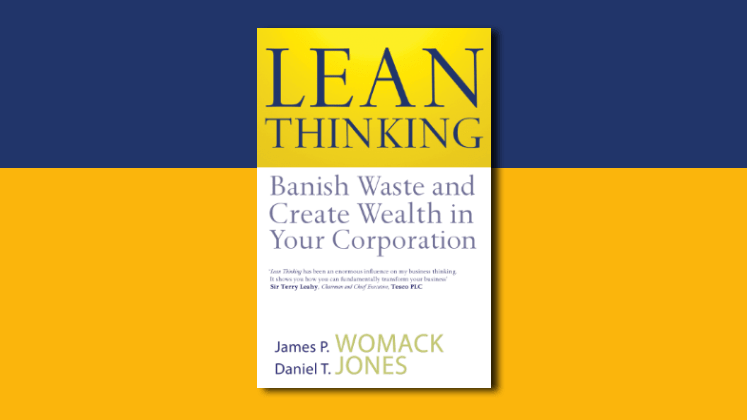
WHY TO READ ‘LEAN THINKING: BANISH WASTE AND CREATE WEALTH IN YOUR CORPORATION’?
In the book, the authors provide a thoughtful expansion upon their value-based business system based on the Toyota model. Along the way they update their action plan in light of new research and the increasing globalization of manufacturing, and they revisit some of their key case studies (most of which still derive, however, from the automotive, aerospace, and other manufacturing industries). The core of the lean model remains the same in the new edition. All businesses must define the ‘value’ that they produce as the product that best suits customers’ needs. The leaders must then identify and clarify the ‘value stream’, the nexus of actions to bring the product through problem solving, information management, and physical transformation tasks.
Excerpts: Why is it so hard to start at the right place, to correctly define value? Partly because most producers want to make what they are already making and partly because many customers only know how to ask for some variant of what they are already getting. They simply start in the wrong place and end up at the wrong destination. Then, when providers or customers do decide to rethink value, they often fall back on simple formulas – lower cost, increased product variety through customization, instant delivery – rather than jointly analysing value and challenging old definitions to see what’s really needed.
BUILT TO LAST: SUCCESSFUL HABITS OF VISIONARY COMPANIES By James C. Collins and Jerry I. Porras
Recommended by Deepak Mohindra, Editor-in-Chief, Apparel Resources
WHY TO READ ‘BUILT TO LAST: SUCCESSFUL HABITS OF VISIONARY COMPANIES’?
The book outlines the results of a six-year research project into what makes enduringly great companies. Two primary objectives for the authors’ research go as follows: ‘To identify underlying characteristics that are common to highly visionary companies’; and ‘To effectively communicate findings so that they can influence management’. The research conducted by Collins and Porras was articulated in Built to Last: Successful Habits of Visionary Companies, presenting valid examples based on stories and research data.
By studying companies that have prospered over the years, the authors were able to uncover timeless fundamentals that enable organizations to endure and thrive. The companies were studies not only as big business but also as start-ups and growth companies. And they succeeded from their earliest days by adhering to the same fundamentals that can help today’s growth companies emerge from the turbulence of the 1990s to become the HPs, 3Ms, and P&Gs of the 21st century.
Excerpt: Visionary companies make some of their best moves by experimentation, trial and error, opportunism, and – quite literally – accident. What looks in retrospect like brilliant foresight and preplanning was often the result of “Let’s just try a lot of stuff and keep what works”.
GEMBA KAIZEN: A COMMONSENSE, LOW-COST APPROACH TO MANAGEMENT By Masaaki Imai
Recommended by Devadas PM, GM – Operations Excellence, Madura Garments
WHY TO READ ‘GEMBA KAIZEN: A COMMONSENSE, LOW-COST APPROACH TO MANAGEMENT’?
When it comes to making your business more profitable and successful, don’t look at re-engineering for answers. The better way is to apply the concept of Kaizen, which means making simple, commonsense-based improvements and refinements to critical business processes. The result will be greater productivity, quality, and profits achieved with minimal cost, time, and effort invested.
The book takes the reader on a path of maximizing results by applying Kaizen to Gemba, i.e. the business processes involved in manufacturing of products and the rendering of services – the areas of business where, as the author puts it, the ‘real action’ takes place.
Excerpts: ‘Quality’ refers not only to the quality of finished products or services but also to the quality of the processes that go into those products or services. ‘Cost’ refers to the overall cost of designing, producing, selling, and servicing the product or service. ‘Delivery’ means delivering the requested volume on time. When the three conditions defined by the term QCD are met, customers are satisfied.
THE MACHINE THAT CHANGED THE WORLD By James P. Womack, Daniel T. Jones and Daniel Roos
Recommended by Devadas PM, GM – Operations Excellence, Madura Garments
WHY TO READ ‘THE MACHINE THAT CHANGED THE WORLD’?
The Machine That Changed The World was the first book to reveal Toyota’s lean production system – the reason behind it enduring success. Based on the largest and most thorough study ever undertaken of any industry – MIT’s Five-Year, Fourteen-Country International Motor Vehicle Program – this book describes the entire managerial system of lean production.
Nearly 20 years ago, the authors provided a comprehensive description of the entire lean system, exhaustively documenting its advantages over the mass production model pioneered by General Motors and predicted that lean production would eventually triumph. Indeed, they argued that it would be a success not just in manufacturing but in every value-creating activity from healthcare to retail to distribution. Today, the book provides enduring and essential guidance to managers and leaders in every industry seeking to transform traditional enterprises into exemplars of lean success.
Acclaim for the book: Based upon MIT’s US $ 5 million, five-year study on the future of the automobile, this book is a ground-breaking analysis of the worldwide move from mass production to lean production. The fundamentals of this system are applicable to every industry across the globe and will have a profound impact on human society – it will truly change the world!
5 PILLARS OF THE VISUAL WORKPLACE By Hiroyuki Hirano
Recommended by S Badri Narayana, Director – Operations Excellence , FLAME TAO Knoware
WHY TO READ ‘5 PILLARS OF THE VISUAL WORKPLACE’?
A critical yet often overlooked area in the visual workplace is the concept of continuous improvement. In the book, Hiroyuki Hirano, a JIT expert, introduces his 5S System – Sort, Set In Order, Shine, Standardize, and Sustain which are steps designed to improve efficiency, strengthen maintenance, and provide continuous improvement in all facets of a company’s operations. Addressing the scepticism of executives who deride the 5S System for its simplicity, the author, revered for his no-nonsense approach, warns of disastrous consequences for companies that fail to recognize its value; if they cannot successfully implement 5S, there is little hope of integrating large-scale changes such as JIT or re-engineering.
Excerpts: Presented in a thorough, detailed style, 5 Pillars of the Visual Workplace explains why the 5S’ are so important, as well as the nuts-and-bolts of 5S implementation. Filled with numerous case studies, hundreds of graphic illustrations, and training materials, including over 40 5S user forms, this volume is a must-have guide for organizations seeking to thrive.
BUILDING ORGANIZATIONAL FITNESS: MANAGEMENT METHODOLOGY FOR TRANSFORMATION AND STRATEGIC ADVANTAGE By Ryuji Fukuda
Recommended by S Badri Narayana, Director – Operations Excellence, FLAME TAO Knoware
WHY TO READ ‘BUILDING ORGANIZATIONAL FITNESS: MANAGEMENT METHODOLOGY FOR TRANSFORMATION AND STRATEGIC ADVANTAGE’?
In the book, Ryuji Fukuda extends the power of his managerial engineering methodology into the context of the top management strategic planning role. The author provides information on the evolution of his CEDAC methods for use in strategic planning and implementation. It introduces several key management technologies and describes their successful application in many Japanese, American and European companies, including – P/O (Policy Objective) Matrix, SEDAC (Structure for Enhancing Daily Activities through Creativity), Window Analysis ( a method for classifying and analysing problem for a view point of management actions required), and Stockless Production (an approach to reduce work-in-process and lead time in an effective and easy-to-understand manner).
Excerpts: Although Ryuji’s work is less well-known than Ohno’s Toyota Production System, his approach by contrast, especially in leaned down organizations, is directed to the right level – management – where improvement yields 10 times leverage, versus shopfloor effort that are slower and one-to-one. As industry leaders are learning, it is the management and supervision that need to understand continuous improvement methodologies.

